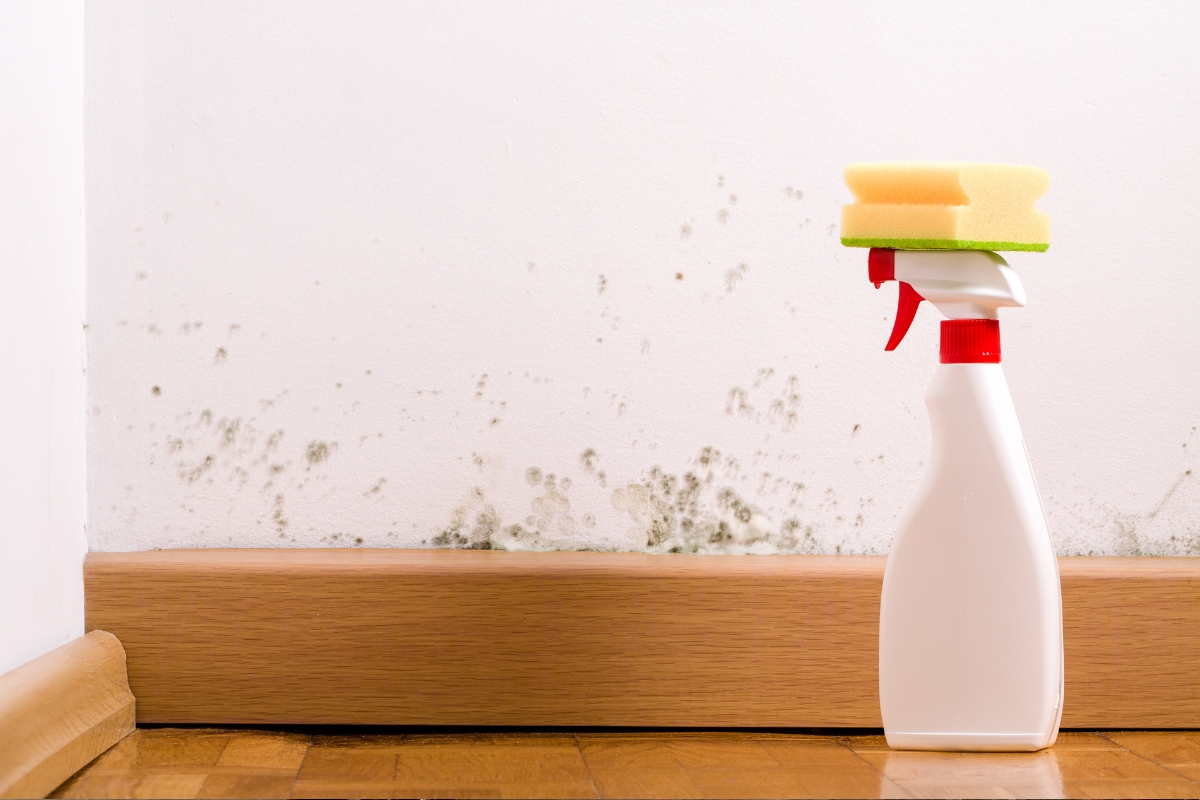Mould can cause serious health issues. From triggering asthma attacks and respiratory problems to activating allergy symptoms such as skin and eye irritation, sneezing, coughing, or wheezing, being exposed to mould can be dangerous for humans and animals.
Despite how dangerous mould can be, the World Health Organisation (WHO) estimates that up to half of Aussie homes have mould problems. Australian properties have become the perfect breeding ground for mould. Many properties are closed off to try and achieve better energy efficiency from HVAC systems. For home properties, no-one is at home during the day to open up the house for natural ventilation.
In addition to the health costs, mould can cost our economy as well. In New Zealand, mould has cost their economy $12 billion, whilst it has cost Canada over $4 billion.
Is your property affected by mould? If yes, what should you do? How do you prevent mould growth? We break it down for you with our handy guide.
What Is Mould?
Mould is a type of fungi that thrives in damp and poorly ventilated areas. It reproduces by making tiny particles called spores, which are carried in the air and may cause health problems if inhaled by people who are sensitive or allergic to them.
Most properties offer this perfect environment, especially in bathrooms and kitchens with limited ventilation, and bedrooms due to respiration. Newer builds are also more susceptible to mould due to the reduction in air leaks and thus air movement. Other moisture sources, such as leaks, that can cause dampness can contribute significantly to mould problems.
Mould can cause significant damage to fabrics, clothes, and other personal items which often must be destroyed.
However, the main concern is the effect of mould on your health.
The most vulnerable people are those suffering from allergies, an existing respiratory problem, or a weakened immune system.
Apart from the usual allergy symptoms, mould exposure can have surprising, and sometimes dramatic, consequences, such as:
- Brain Fog – people experiencing brain fog may have short term memory loss, be unable to understand what they are doing, be unable to express themselves adequately, and easily lose concentration and focus and become disorientated.
- Chronic Fatigue – people suffering from chronic fatigue find themselves constantly tired, with no energy or motivation for their usual activities. They may find that no amount of rest feels enough, regardless of how long they are sleeping each night. They may also feel constantly weak.
- Slow Healing – minor cuts and bruises can take weeks to heal instead of days.
Other symptoms may include: aches, muscle cramps, unusual pain, ice pick pain, headache, light sensitivity, red eyes, blurred vision, tearing, sinus problems, cough, shortness of breath, abdominal pain, diarrhoea, joint pain, morning stiffness, skin sensitivity, mood swings, appetite swings, sweats (especially night sweats), temperature regulation or dysregulation problems, excessive thirst, increased urination, static shocks, numbness, tingling, vertigo, metallic taste, tremors, or multiple chemical sensitivities.
How To Check For Mould
Mould is often very visible, forming brown or black spores on ceilings, walls or window frames and panes. Check bathrooms, kitchens, laundries, and other parts of your property that have water pipes and systems. Check bedrooms and any other space where people spend the majority of their time indoors.
You may smell mustiness in some little-used spaces, which can indicate mould growth. Check inside and behind furniture, such as wardrobes and cupboards, behind wall hangings and paintings, and any other spaces with little air movement.
If you have attic or basement storage, check those spaces as well.
How To Get Rid Of Mould
Mould needs humidity and wetness to grow. The fastest way to limit mould growth is to eliminate or limit the moisture source. Ventilate the affected spaces and get fresh and dry air flowing through. Use a dehumidifier to remove excess humidity.
Wash affected surfaces with white vinegar or a strong mould killer. Remove wet and damaged materials and fabrics to prevent spreading spores. Be sure to wear a mask and gloves at all times during the cleaning process to prevent you from breathing in or touching any mould spores.However, it is very difficult to remove mould completely as it lies deep within the surface. It is best left to professionals to assess the situation and thoroughly clear your property of mould.
Professionals can also advise you on how to prevent future manifestations.
A bit of mould is a pleiad of flowers; a nebula is an ant-hill of stars.
Victor Hugo
What To Do If Mould Comes Back Time And Time Again
If it feels like you are constantly battling mould on your property, it could be caused by something fundamental in your property.
Call a professional builder to inspect your property. Is there any structural damage that is causing water ingress? Find the source of the problem and see if your chosen builder can fix the problem.
Consider your property’s internal air moisture. Is your HVAC working properly? Do you have enough ventilation in your property? Is there moisture building up within windows and window frames, within walls, underneath the floors?
Not only will an experienced builder such as Star PM be able to spot your problems and fix them, they will also give you advice to ensure that these problems won’t come back again. Contact us for a consultation and start eliminating your mould problem today.

